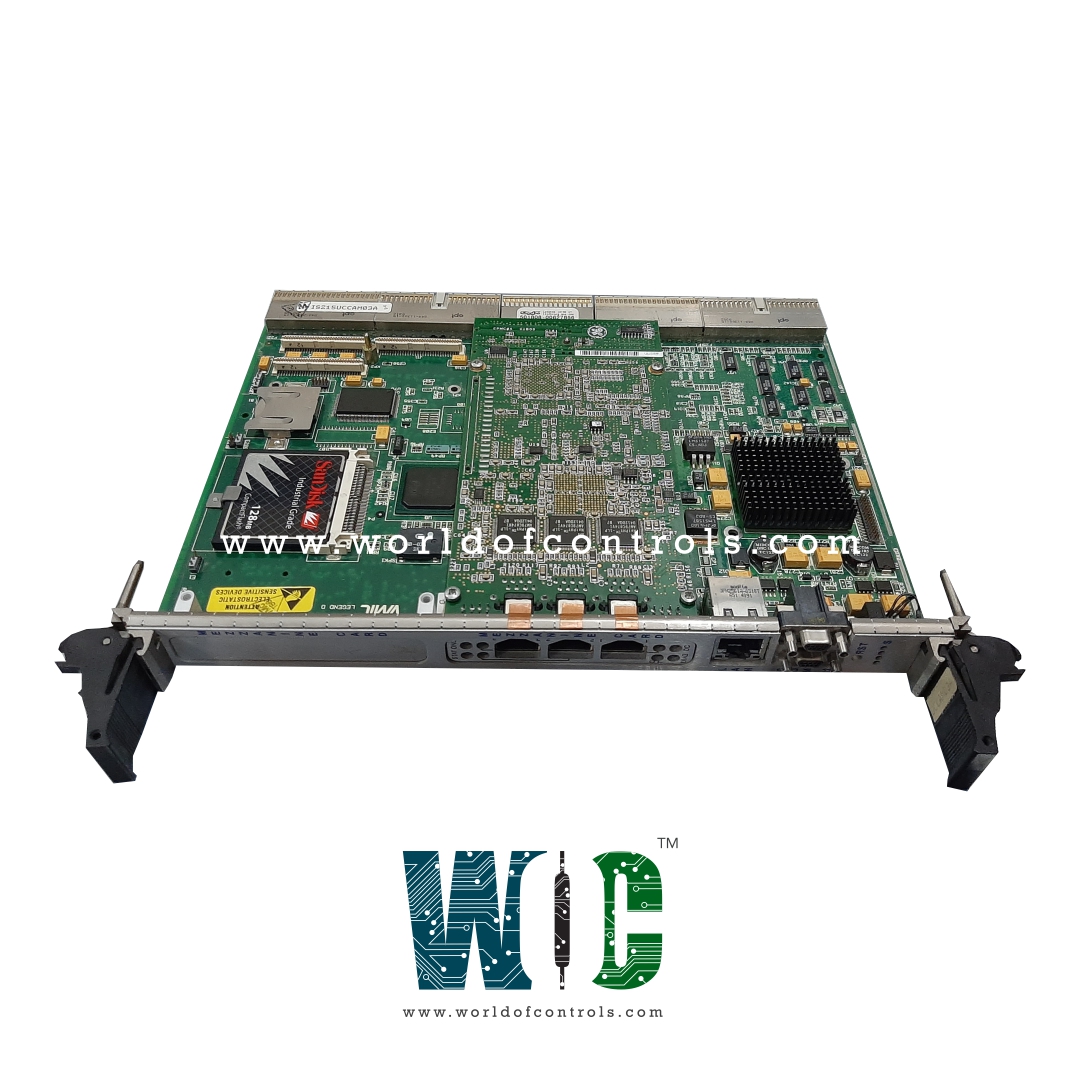
World Of Controls understands the criticality of your requirement and works towards reducing the lead time as much as possible.
IS215UCCAM04A - Compact PCI Processor Module (650MHz) is available in stock which ships the same day.
IS215UCCAM04A - Compact PCI Processor Module (650MHz) comes in UNUSED as well as REBUILT condition.
To avail our best deals for IS215UCCAM04A - Compact PCI Processor Module (650MHz), contact us and we will get back to you within 24 hours.
SPECIFICATIONS:
Part Number: IS215UCCAM04A
Manufacturer: General Electric
Series: Mark VIe
Product Type: Compact PCI Processor Module (650MHz)
Microprocessor: Intel Pentium M processor 1.6 GHz
Technology: Surface Mount
Operating System: QNX Neutrino
Programming: 16-bit signed integer
Power Requirements: +5 V dc
Memory: 256 MB
Common Mode Voltage Range: ±5 V
Dimensions: 11.00 x 9.00 x 3.00
Operating temperature: 0 to 60 Deg C
Primary Ethernet Interface: 10BaseT/100BaseTX
No.of Analog Voltage Inputs: 6
Repair: 3-7 Days
Availability: In Stock
Country of Origin: United States
Manual: GEH-6721L
FUNCTIONAL DESCRIPTION:
IS215UCCAM04A is a Compact PCI Processor Module (650MHz) manufactured and designed by General Electric as part of the VIe Series used in GE Distributed Control Systems. The CompactPCI Processor Module serves as a hub for essential components in a computer system, including the central processing unit (CPU), memory modules, input/output interfaces, and other necessary elements. These modules are commonly deployed in industries demanding high reliability, such as telecommunications, industrial automation, aerospace, and more. CompactPCI, an extension of the PCI (Peripheral Component Interconnect) standard, offers a modular computing solution known for its ruggedness and reliability, ideal for harsh environments. Within a CompactPCI system, multiple slots within a chassis accommodate various modules, including processor, communication, and peripheral modules, which can be inserted and interconnected as needed.
OPERATION:
The controller is loaded with software specific to its application, which includes but is not limited to steam, gas, land-marine aero-derivative (LM), or balance-of-plant (BOP) products. It can run on rungs or blocks. The IEEE 1588 protocol is used through the R, S, and T IONets to synchronize the clock of the I/O packs and controllers to within ±100 microseconds. External data is transferred to and from the control system database in the controller over the R, S, and T IONets. In a simplex system, this includes process inputs/outputs to the I/O packs.
INSTALLATION:
The controller module contains (at a minimum) a controller and a four-slot CPCI rack with either one or two power supplies. The primary controller must be placed in the left-most slot (slot 1). A second, third, and fourth controller can be placed in a single rack. The CMOS battery is disconnected using a processor board jumper during storage to extend the life of the battery. When installing the board, the battery jumper must be reinstalled. Refer to the specific UCCx module drawing for the jumper location. The battery supplies power to the CMOS RAM settings and the internal date and real-time clock. There is no need to set CMOS settings since the settings are defaulted to the proper values through the BIOS. Only the real-time clock must be reset. The initial date and time can be set using a system NTP server or the ToolboxST application. If the board is the system board (slot 1 board) and other boards are in the rack, ejection of the system board will cause the other boards to stop operating. It is recommended that power be removed from the rack when replacing any board in the rack. Rack power can be removed by one of the following methods.
WOC offers the largest inventory of OEM replacement parts for GE Distributed Control Systems, ensuring immediate access to high-quality components that keep your operations running smoothly. In addition to supplying new and rebuilt boards backed by a comprehensive warranty, we provide expert repair services for faulty boards using advanced diagnostic tools and genuine parts. Our dedicated technical team is available 24/7 to deliver prompt assistance, professional guidance, and tailored automation solutions to meet your specific operational needs. For pricing, availability, or repair inquiries, contact our specialists by phone or email—we’re always ready to support your OEM and automation requirements.
What is a CompactPCI Processor Module?
A CompactPCI Processor Module is an industrial-grade computing board designed to fit into a CompactPCI chassis, following a standardized form factor and bus architecture. These modules integrate CPUs, memory, and I/O interfaces, providing a rugged and modular platform ideal for embedded applications in harsh environments such as telecommunications, industrial automation, and defense.
Which processors are typically used in CompactPCI Processor Modules?
The processors used vary by model and generation but commonly include Intel Pentium, Core i3/i5/i7 series, PowerPC, or ARM processors. These CPUs are chosen to balance processing power with power consumption and thermal constraints to ensure reliable operation in embedded systems.
What operating systems can run on these modules?
CompactPCI Processor Modules support a wide range of operating systems tailored for embedded and real-time applications. This includes Linux distributions, Windows Embedded, and real-time operating systems like VxWorks, QNX, and RTEMS, enabling users to choose the OS that best fits their software and performance requirements.